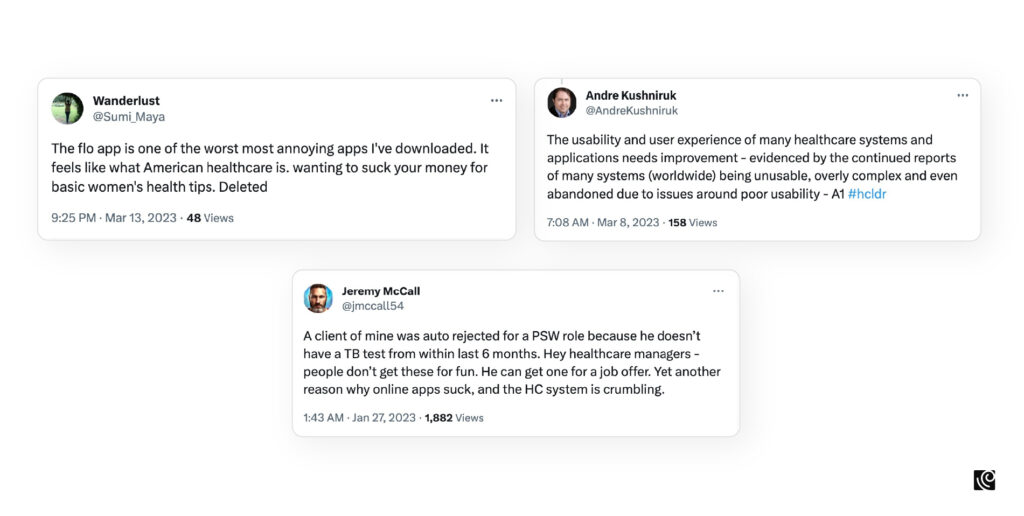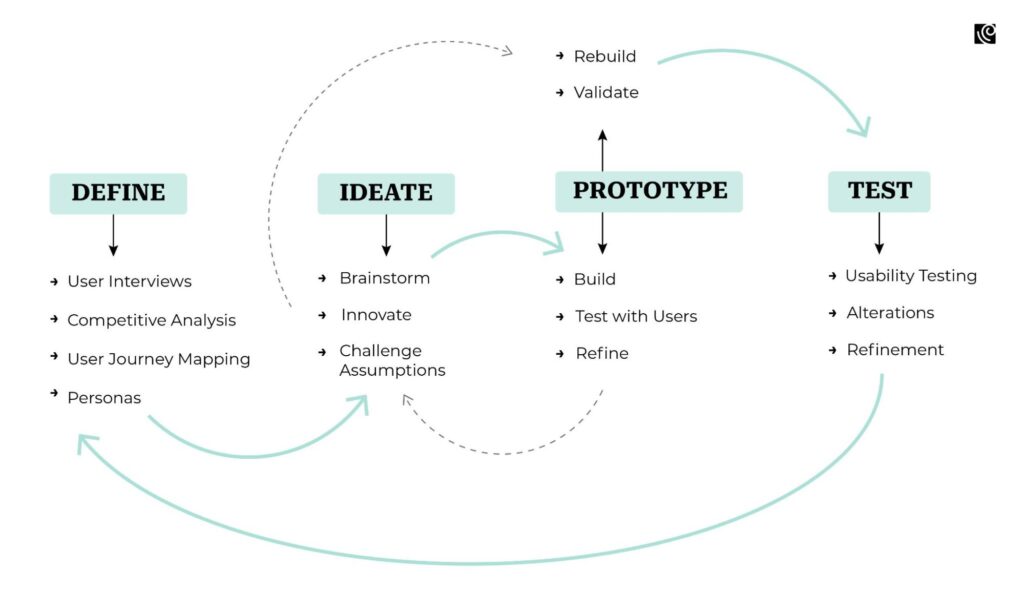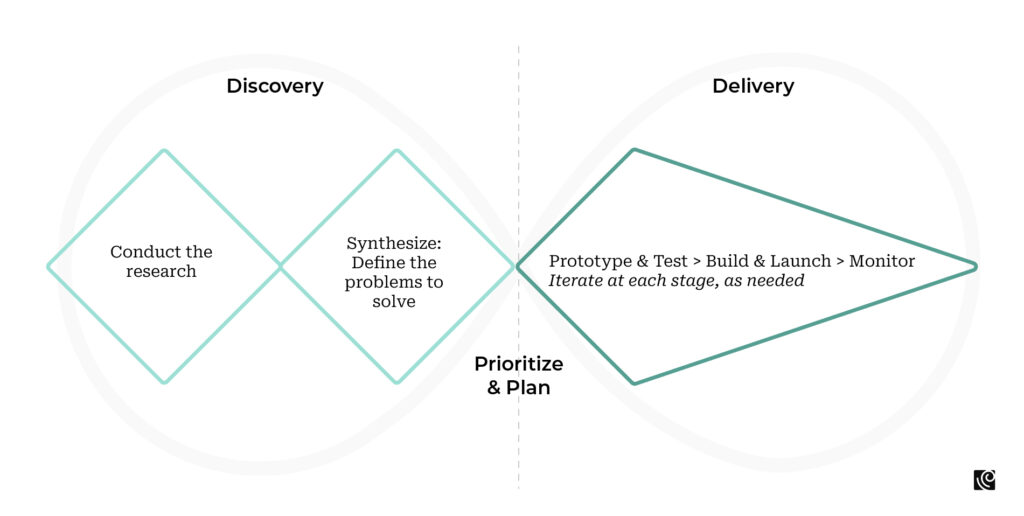Digital healthcare products have been notorious for their suboptimal UX owing to their complexity (individually and as a part of the platforms and interconnected systems), the demands of industry standards, cascading dependencies, the expected resistance to change, and not to forget, this –

So, how can healthcare product leaders make sure they’re taking decisions in the best interests of their users and make sure they continue to do that all the way through?
The answer lies in embracing the continuous discovery process and infusing it into their product strategy.
What Does Continuous Product Discovery Mean?
Marty Cagan, an influential name in product management defines continuous product discovery as:
Continuous discovery is a process where you are constantly identifying, validating, and describing new product backlog items.
In other words, this method has product teams constantly in touch with users and other stakeholders across the full cycle, validating every problem, idea, and solution.

By continually testing and validating through authentic research, teams can ensure they are building a product that meets user needs and aligns with business goals.
The question is, is the healthcare product industry actually following this? Probably not.

Many healthcare product leaders think they’ve got product discovery covered— they have conversations with patients, providers, caregivers, insurers, and other SMEs at the start of the product development process, get a fair idea about their workflows and environment, and that’s it. Discovery activities may be conducted sporadically, and their results used to validate existing decisions instead of informing new ones.
However, this approach is unproductive, as seen in the comparison table below, since these ad-hoc attempts at being user-friendly only rely on a solitary research phase at the start of the process.

When discovery activities are not integrated throughout the product development cycle, businesses risk investing significant resources in building a product that may not meet customer needs or address their pain points. This can result in wasted time, effort, and money.
A digital healthcare transformation trends report from Deloitte revealed that 92% of respondents noted that better consumer satisfaction and engagement are the top outcomes their organizations want to achieve from digital transformation, followed by improved care quality at 56%.

Continuous discovery is the key to ensuring improved user satisfaction and engagement, as opposed to linear methods that have a solitary discovery phase at the beginning. Conducting discovery only early on may mean that the team works on insights that are stale or obsolete, given how fast requirements tend to change.
Meet Your Customers Where They Are With Continuous Product Discovery
For healthcare product teams, continuous product discovery allows for a more controlled approach to risk mitigation rather than just reacting to a crisis scenario.
For a sector that’s directly linked with economic and political conditions, the healthcare industry today can be best described as volatile, complex, and ambiguous. Be it the pandemic, war, or inflation – everything potentially influences user behavior, needs, expectations, and activity. It may force you to rethink your product or restructure your business strategy at a moment’s notice.
And this is where continuous discovery truly shines. Whatever discovery framework or methodology you use, it’s usually to find a new problem to solve, validate that the problem is worth solving, and test possible solutions. The sustained practice of product discovery to inform product development decisions continuously ensures you remain one up to the uncertainties that come your way.

Continuous discovery invites the user into the product-building process at each stage. It helps uncover what the team ought to be building—and validating ideas for how they should build it—before jumping into development. It brings additional layers of insights through discovery techniques at every stage, such as
- Customer interviews and surveys
- Product analytics
- Usability testing
- Rapid prototyping
- Content testing
Continuous product discovery embraces the importance of customer feedback and transforms it into a habit. Acclaimed coach and author of ‘Continuous Discovery Habits’, Teresa Torres recommends that product teams should be gathering insights from customers on a weekly basis at the very least.
Conducting Successful Continuous Discovery
1. Assemble your product team
So, who spearheads the continuous discovery process?
Determining factors are your budget, the resources at your disposal, and the size and age of your organization. The best case scenario is when the user researchers conduct the discovery in collaboration with product management, as mandated in the product roadmap and vision.
As the landscape of product teams evolves to include more cross-functional team members, it results in an overlap of roles between product managers, UX designers, and researchers. To effectively extract the best skills out of the existing team, UX Designers and Product Management must work actively to build partnerships.
When it comes to planning the sprints, it’s best done collaboratively, where researchers and product managers collectively do the following –
- Identify the research questions and objectives
- Jointly define the scope and activities
- Clearly define the roles and distribute tasks where
- Product: Plans and leads the discovery process, ensures alignment with the roadmap, and creates a shared vision
- Design: Facilitates discovery activities such as research and synthesis, prototyping, and testing
It is a hallmark of mature product teams that they collaboratively manage to accomplish the above, resulting in minimal friction and improvement in productivity.
2. Use The Double Diamond Approach
When used specifically for continuous product discovery, the Double Diamond process can be called the Triple Diamond process, with two diamonds for discovery and one for delivery.

The process can be broken down into two main phases: problem discovery and solution delivery.
Problem discovery involves identifying the initial problem or challenge and ends with a validated problem. Make sure to clearly define the research objective and the scope of the activities under it so that it does not spiral out of control.
Here, teams should focus on conducting unbiased research and synthesis through qualitative and quantitative methods such as:
- User interviews
- Surveys
- Ethnographic studies
- Concept testing
Tips to follow
Get rid of biases
The problem discovery phase is fertile ground for harboring all kinds of biases, so it’s important to steer away from drawing conclusions early on. Confirmation bias also influences the questions and findings and leads to skewed data.
Even the most experienced product managers can be tempted to correct the users, ask them leading questions, start pitching new features, explaining product vision during research sessions. As natural as it is to do so, it can heavily influence the responses.
Therefore, in the interest of the gaining right insights, it’s best to trust expert UX researchers to conduct the research.
Invest in the right tools
Investing in the right tools, such as Userbit, ensures that your research & synthesis are efficient and the collaterals are stored in a place that can be accessed by all. There are multiple options available to choose from based on your needs.
Share the findings at the right time with the right people
At this stage, it is important to define how the discovery findings would be shared, with whom, and at what stage. As time is of the essence, doing this requires strategic planning. Ensure to engage the right stakeholders based on their levels of interest and influence.
So make sure to take efforts in sharing the outcomes, quoting them again and again, to bring alignment amongst the team on why you’re doing what you’re doing.
Solution delivery involves finding an optimal first version of a solution to be delivered.
Here, teams should focus on getting feedback at each stage for continuous iteration, engaging in activities, such as:
- Wireframing and prototyping
- Usability testing
- UAT
- Beta testing
- Post-launch monitoring
Tips to follow
Recruit the right users
Recruiting users to test, especially for healthcare products, can be exhausting. However, in the absence or shortage of actual users, what can help is picking the best representation of the ideal customer. These could be from the technical support team or even Subject Matter Experts.
Test and iterate vigorously at every stage
It is critical to focus on continuous feedback loops. Get feedback at each stage, iterate, and validate again at every stage. If manage to do a good job of incorporating feedback with each iteration, you’re bound to receive positive feedback as you move forward. Each iteration takes you closer to the right solution.
Product Development Process Infused With Continuous Discovery: An Example
Step 1: Identify the desired outcome of the product or feature you are working on.
This could be “to reduce the administrative burden on healthcare providers.”
Step 2: The team conducts research to identify opportunities that can help achieve this goal.
Opportunities are potential areas for improvement or innovation that can help address the desired outcome. For example, an opportunity in the above scenario might be “create a seamless integration between the telehealth platform and the EHR to reduce the time and effort required for providers to document telehealth visits.”
Step 3: The team generates potential solutions for each opportunity.
This is where ideation comes into play. Brainstorming sessions and other ideation techniques are used to come up with a variety of potential solutions for each opportunity.
In this scenario, the potential solutions for the above-mentioned opportunity can be:
- Simplifying documentation between appointments
- Including pre-appointment responses from the patient to help providers prep in advance
- Trigger follow-up steps post-consultation
Step 4: Evaluate and prioritize
Once all potential solutions have been generated, the team can evaluate and prioritize them based on a variety of factors such as feasibility, impact, and user desirability.
This can help narrow down the list of potential solutions to a few key ideas that can be further developed and tested.
To Conclude, Develop a Mindset that Fosters Co-Creation
Teams can move faster by regularly performing small discovery activities to gain more insights about their users. This habit can benefit not only small businesses but also larger enterprises that lack dedicated continuous product discovery resources.
Teresa Torres emphasizes leaving behind the validation mindset and rather adopting a co-creation mindset:
To get started, teams can focus on activities such as:
- Reaching out to potential and current customers each week
- Iterating prototypes based on user feedback
- Testing one discovery experiment every week
By committing to being customer-centric and engaging with users regularly, teams can gather valuable feedback and make iterative improvements to their products.
Adopting a continuous product discovery model can have a significant impact on your company’s bottom line.
But the best way to understand its benefits is by applying its principles and validating the approach for yourself. This change does not require dismantling your existing discovery structure, but empowering the product team to be more involved in daily processes.
It involves creating smaller, more agile project teams that focus on specific product goals and use design methods that can quickly assess experiment results.
The key is to adapt to a new process, eliminate communication barriers, and reduce bureaucratic obstacles to unlock the full potential of your design teams, allowing for quick decision-making and implementation across multiple product development areas.









